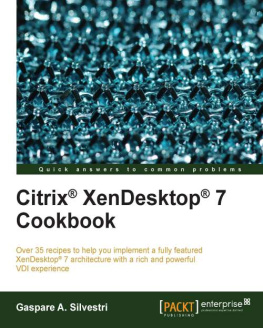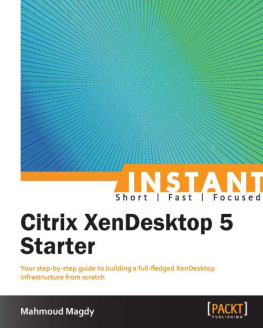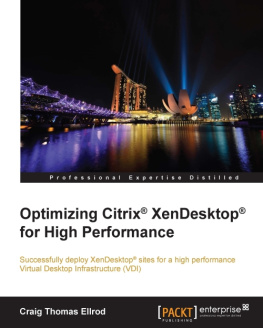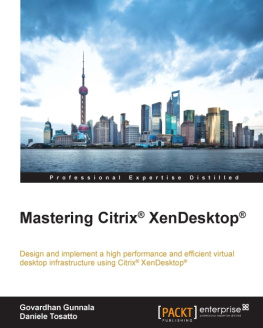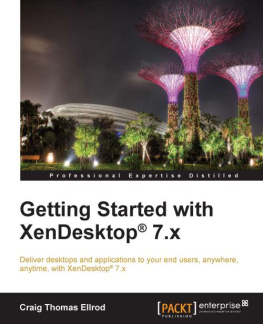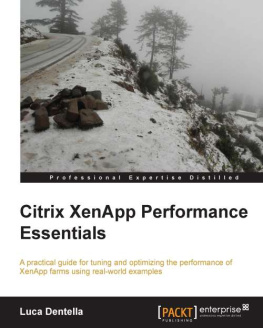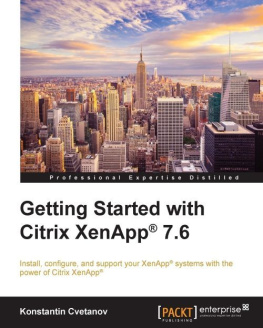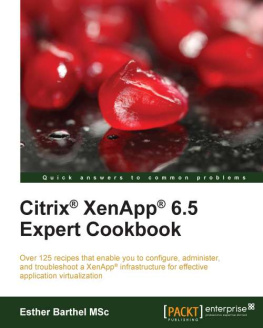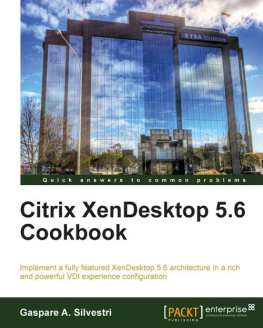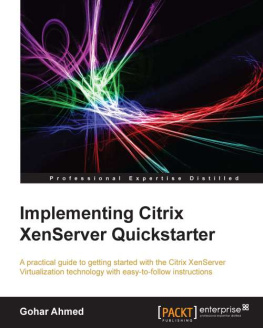Preface
It was 1999 and the whole IT world was busy with the Y2K "bug" when by chance I had my first encounter with a Microsoft Windows NT 4.0 terminal server. As a young systems engineer for an international conglomerate, I was, of course, highly motivated and was open to every innovation, at least those that had something to do with computers and networks. Since I was so fascinated by the fundamental idea, the disillusionment that came after an intensive period of working with this new technology was all the greater: the technical possibilities were enormously limited and the problems with stability and performance were, to some extent, insurmountable. Certainly not an idea or technology to build your career on. As a Microsoft infrastructure specialist, many more exciting times were waiting with Windows Server 2000 and the associated introduction of Active Directory definitely provided enough variety to my workday.
In early 2003, now as a consultant and systems specialist at another large international company, I was instructed for the first time to plan and implement an environment based on Windows Server 2003 with Citrix MetaFrame XP at my desk. After a short orientation period, I discovered that it really was possible to use this architecture as the basis for providing a larger number of users with centrally administered virtual desktops and applications. This enthusiasm led to a second foothold for a career in IT and, from then on, Citrix terminal server technology became an integral part of my repertoire alongside Microsoft Windows Server infrastructure services.
As an independent virtualization solutions architect, I have had the good fortune to spend the past ten years planning, setting up and supporting the latest Microsoft and Citrix technologies in countless environments, developing and implementing solutions for companies with just a few hundred workstations to multi-site data centers for tens of thousands of users.
I've long had the idea of turning these experiences into a book. The complete overhaul of existing architectures, technologies and processes with the release of Citrix XenDesktop / XenApp 7.x was the initial impetus for this project. This book describes the planning, set-up and operation of a virtualization solution based on the new FMA technology and the current version of XenDesktop / XenApp 7.7 and 7.8. It will help IT systems and Citrix solutions architects, consultants, and administrators alike to successfully implement Citrix virtualization projects.
I would like to express a special thanks to my one-of-a-kind wife. It has only been with her full and unconditional support that I have been able to following my path and find my place in the world.
Gran August Eibel
Enterprise Solution Architect & Senior Consultant / GECON IT-Solutions
Overview
- Product presentations and foundations of a virtualization solution
- Pros and cons, including business case observations
- Architecture of the required infrastructure components
- Architecture of Citrix XenDesktop and XenApp 7.x components
- Architecture of other Citrix components for a complete solution
- Design of a virtualization solution based on the 5-layer model
- Required decisions and required work packages for creating a Citrix XenDesktop/XenApp 7.7/7.8 architecture design, including the infrastructure components
- Detailed instructions for implementation and configuration of all components
- Adjustments to the infrastructure components
- Setting up the host infrastructures based on XenServer 6.2/6.5
- Installation of the database environment, including SQL Mirroring
- Implementation of all Citrix XenDesktop/XenApp 7.6 components
- Setting up a Citrix Provisioning Server 7.7 environment
- Installation and configuration of the optional components - Citrix NetScaler Gateway / Citrix AppDNA and Microsoft App-V
- Checking, evaluating, and virtualizing applications
- Creating machine catalogues
- Creating Delivery groups and releasing virtual desktops and applications
- Setting up master images and provisioning virtual resources across the different provisioning methods
- Managing the entire environment
- Personalization
- Optional adjustments and optimizations
Contents
1 Introduction
With the release of the Citrix XenDesktop 7.0 platform in early 2013, the old architectures for provisioning centralized virtual desktops and applications that have been known for many years have been fundamentally revised and redesigned. The well-known IMA (Independent Management Architecture), which was the basis of XenApp/XenDesktop for over 10 years, has been replaced by the new FMA (FlexCast Management Architecture) technology, which offers completely new features and elements for provisioning virtual central resources. FMA architecture will in turn be the basis of further versions of XenDesktop and XenApp for many years. This fact, along with very early experiences with these new methods and technologies in different projects, have contributed to the publishing of this book.
1.1 Structure of the book
The first chapters deal with the product definitions, principles, and architectures. All components of a Citrix XenDesktop/XenApp environment are described. Subsequently the book is divided into three sections, which directly present the usual three phases of an IT project.
The first section deals with planning and designing (Phase 1 - PLAN) a Citrix environment based on the five layers of a virtualization solution. Each design must demonstrate different ways and precipitate decisions in the User Layer, the Access Layer, the Desktop Layer, the Control Layer, and finally in the Hardware Layer.
Once the phase 1 architecture design has been tested - in an optimal manner - via a PoC (Proof of Concept) and validated, the entire solution can be set up and configured (Phase 2 - BUILD). Thus goes into detail regarding all the necessary preparations and steps for successfully installing a complete Citrix XenDesktop & XenApp 7.7/7.8 environment.
The last section of the book deals with the final phase of the Citrix virtualization project; all the requirements for the first three layers of the design are presented. The desired resources are configured and optimized, and operation can be initiated in accordance with individual personalization (Phase 3 - RUN).
1.2 The Citrix XenDesktop und XenApp 7.8 platform
Citrix XenDesktop and XenApp have been a big buzzword in the world of desktop and application virtualization for years. Citrix WinFrame was published in 1995 based on Windows NT 3.51 as the first Windows-based multi-user operating system (previously, WinView had only offered one version based on OS/2). A very early version of the ICA protocol built into WinFrame allowed multiple users to access the desktop and the applications of a Windows Server simultaneously.
When Microsoft released a multi-user version of Windows NT 4.0 in 1998 with Windows NT 4.0 Terminal Server edition, Citrix responded with MetaFrame 1.0, the first version of Citrix that no longer needed its own server code, but instead relied on the multi-user environment of the base operating system to expand it accordingly. In the following years, the functions and possibilities for publishing desktops and applications (resulting in the terms published desktop and published app) continued to expand, with MetaFrame 1.8 supporting Microsoft Windows Server 2000 and MetaFrame XP supporting Windows Server 2003.
The first name change came in 2003 when Citrix MetaFrame became Citrix MetaFrame Presentation Server. Citrix continued to publish additional components and products for setting up comprehensive virtualization solutions based on a Windows terminal server, eventually resulting in the appearance of Citrix Access Suite in 2005, with the central components becoming Citrix Presentation Server.


